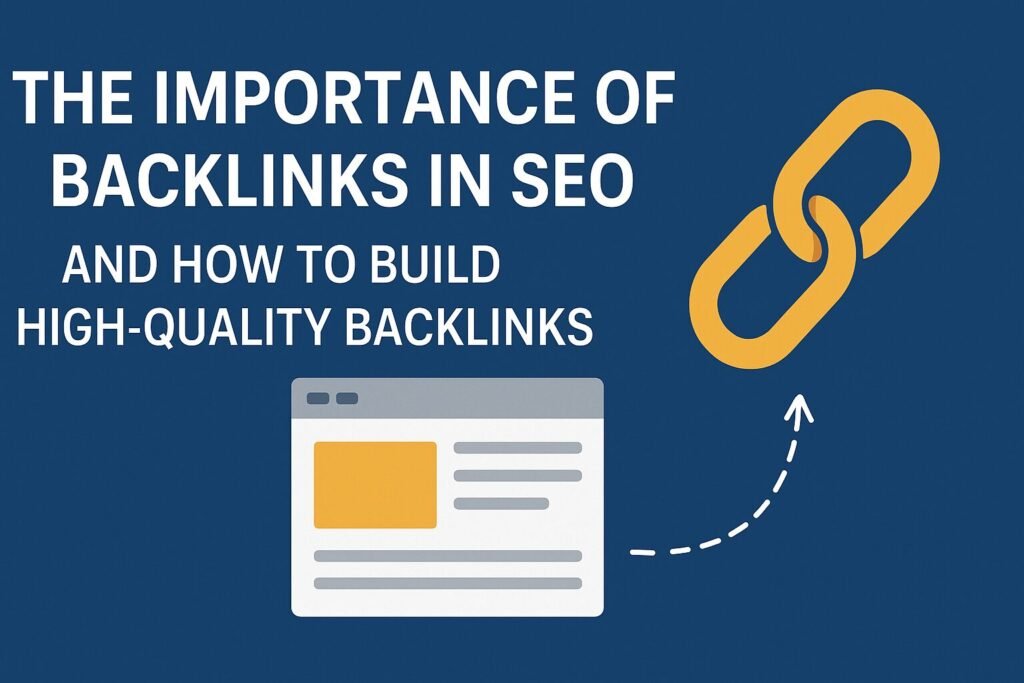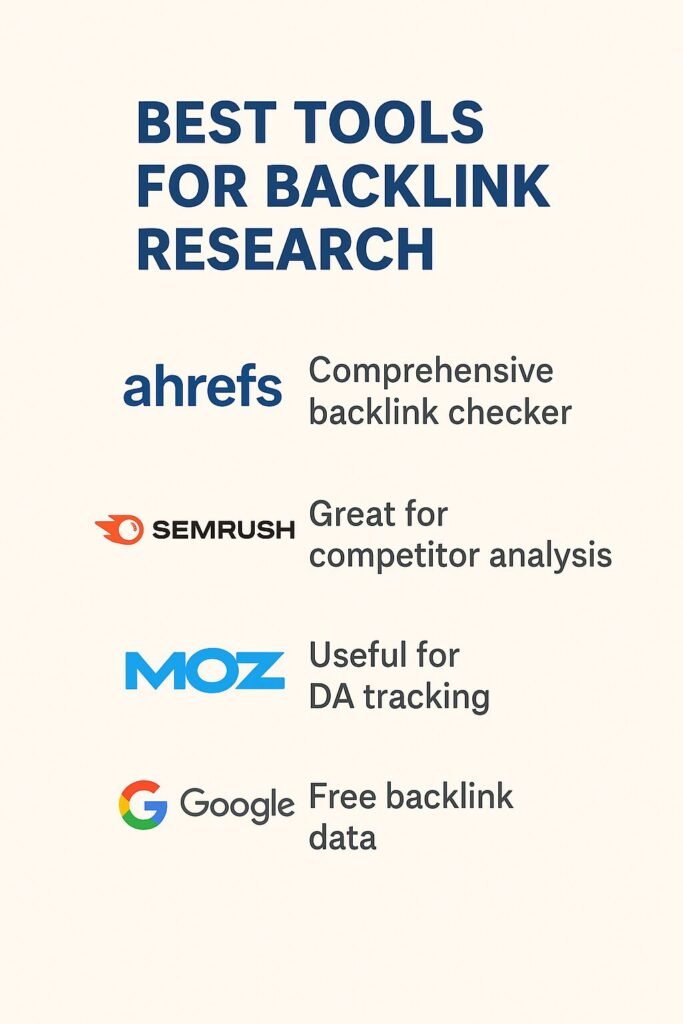Search Engine Optimization (SEO) is built on three main pillars: technical optimization, on-page optimization, and off-page optimization.
Among these, backlinks play a crucial role in determining how well your website performs on search engines.
According to Neil Patel, Backlinks are fundamental to your site’s ability to rank well in search engines.
If you want your website to rank higher, attract organic traffic, and get approved for monetization platforms like Google AdSense, backlinks are one of the most important factors you must focus on.

In this article, we’ll explore why backlinks matter, the benefits they bring, and step-by-step methods to build high-quality backlinks that help your site stand out.
What Are Backlinks?
A backlink is simply a hyperlink from one website to another.
👉 Example: If a food blog links to your recipe post, that link is considered a backlink to your website.
Backlinks are also known as inbound links or incoming links, and they act as votes of confidence from one site to another.
The more high-quality backlinks your site receives, the more search engines like Google view your website as a trusted and authoritative source.
Why Are Backlinks Important for SEO?
Backlinks are not just random links; they play multiple roles in your website’s growth.
1. Boost Search Engine Rankings
Google’s algorithm views backlinks as a signal of authority and relevance. Websites with more quality backlinks generally rank higher compared to those without.
2. Increase Organic Traffic
When your content ranks higher, you automatically get more clicks and visitors. Plus, backlinks bring referral traffic directly from websites linking to you.
3. Build Domain Authority
Websites with strong backlink profiles have higher Domain Authority (DA), which helps future content rank faster with less effort.
4. Faster Indexing
Search engines discover content by following links. If multiple websites link to you, your new pages get indexed faster.
5. Trust and Credibility
Backlinks from reputable sources signal to both search engines and users that your website is trustworthy and reliable.
Types of Backlinks
Types of Backlinks
Not all backlinks are equal. Here’s a breakdown:
✅ Do-Follow Backlinks
Pass SEO authority (link juice) to your site.
⚠️ No-Follow Backlinks
Don’t pass SEO authority but bring traffic and exposure.
🌍 High-Authority Backlinks
From top-tier sites (e.g., Forbes, HubSpot, .gov, .edu). Strong ranking power.
📌 Low-Quality/Spammy Backlinks
From irrelevant or spammy sites. These can harm SEO.
Powered by Urlsigma
Not all backlinks are equal. Here’s a breakdown:
- ✅ Do-Follow Backlinks – Pass SEO authority (link juice) to your site.
- ⚠️ No-Follow Backlinks – Don’t pass SEO authority but bring traffic and exposure.
- 🌍 High-Authority Backlinks – From top-tier sites (e.g., Forbes, HubSpot, .gov, .edu). These carry strong ranking power.
- 📌 Low-Quality/Spammy Backlinks – From irrelevant or spammy sites. These can harm your SEO.
👉 Rule of thumb: Always prioritize quality over quantity.
How Many Backlinks Do You Need?
The number depends on your niche, competition, and content quality.
- Small niches: Sometimes 10–20 high-quality backlinks are enough.
- Competitive industries: May require hundreds of backlinks.
But remember, one backlink from a trusted site can be more powerful than 50 low-quality links.
How to Build High-Quality Backlinks
Building backlinks is one of the most challenging aspects of SEO. But with the right strategies, you can consistently earn backlinks that help your site grow.
Here are the best backlink-building methods:
1. Create High-Quality, Link-Worthy Content
The foundation of backlinks is valuable content. If your content is:
- ✅ Unique
- ✅ Well-researched
- ✅ Helpful and engaging
…then other websites will naturally want to link to it.
Examples of link-worthy content:
- Ultimate guides (e.g., “The Complete Guide to Digital Marketing”)
- Case studies
- Original research & statistics
- Infographics and visual data
2. Guest Blogging
Guest blogging is one of the most effective and safe ways to build backlinks.
Steps:
- Identify blogs in your niche.
- Pitch a well-researched topic.
- Write a valuable article with a contextual backlink to your site.
💡 Pro Tip: Focus on relevant, high-quality websites, not spammy ones.
3. Broken Link Building
This strategy involves replacing broken (404) links on other websites with your own content.
Steps:
- Use tools like Ahrefs, SEMrush, or Broken Link Checker.
- Contact the site owner politely.
- Suggest your content as a replacement.
This method works because you’re helping the site owner fix an issue while gaining a backlink.
4. Skyscraper Technique
Coined by Brian Dean, this technique involves:
- Finding high-ranking content in your niche.
- Creating a better, more comprehensive version.
- Reaching out to sites that linked to the original content.
Since you’re offering something better, many will update their links to your article.
5. Leverage Social Media & Forums
While most links from social media are no-follow, they still help by:
- Driving traffic
- Increasing brand visibility
- Attracting natural backlinks
Platforms to focus on: Quora, Reddit, LinkedIn, Facebook Groups, niche forums.
6. Build Relationships with Website Owners
Networking in your niche is powerful.
- Comment on blog posts
- Share others’ content
- Engage with influencers
Over time, these relationships lead to natural backlink opportunities.
7. Business Listings & Directories
Submitting your site to directories helps with backlinks + visibility.
Examples:
- Google Business Profile
- Yelp
- Niche-specific directories
8. Testimonials and Reviews
Many companies publish customer testimonials on their websites. By writing a testimonial and linking your site, you gain a quality backlink.
9. HARO (Help A Reporter Out)
HARO connects journalists with sources. By providing expert insights, you can earn backlinks from major news outlets and authority sites.
10. Internal Linking Strategy
While not external backlinks, internal links help distribute link juice across your site. This strengthens your entire backlink profile.
Common Mistakes to Avoid
- ❌ Buying backlinks from shady sources
- ❌ Spamming blog comments
- ❌ Using irrelevant or low-quality sites
- ❌ Over-optimizing anchor text
👉 Google is smart. Low-quality or manipulative link building can result in penalties that hurt your website.
How Backlinks Help in Google AdSense Approval
Many bloggers aim to monetize with Google AdSense. Backlinks help by:
- Driving faster traffic growth
- Improving trust and authority
- Boosting SEO rankings
Google prefers sites that show credibility, consistency, and authority—all of which are strengthened by backlinks.
Best Tools for Backlink Research

To track and analyze backlinks, use these tools:
- Ahrefs – Comprehensive backlink checker
- SEMrush – Great for competitor analysis
- Moz Link Explorer – Useful for DA tracking
- Google Search Console – Free backlink data
Future of Backlinks in SEO
While backlinks remain powerful, Google is increasingly valuing content quality, user engagement, and relevance.
- AI-driven search (like Google SGE) may reduce over-reliance on backlinks.
- Topical authority and brand mentions (even without links) are becoming ranking signals.
- However, authoritative backlinks will continue to play a major role in SEO success.
Final Thoughts
Backlinks are one of the most powerful ranking factors in SEO. They help you:
- ✅ Increase visibility
- ✅ Build authority
- ✅ Drive organic traffic
- ✅ Speed up AdSense approval
But always remember: quality over quantity is the golden rule.
Focus on building backlinks from relevant, authoritative websites, and combine them with great content and solid on-page SEO.
When done right, backlinks can be the key factor that takes your website from obscurity to authority.




